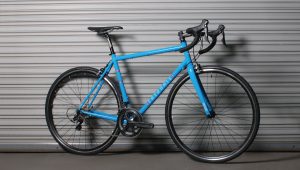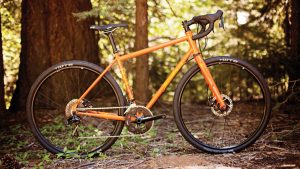by John Brown, HaveFunBiking.com
Road bikes have been popular in cycling for longer than any other category. For example, many would remember the iconic dark green color of a Schwinn varsity from the 60’s as the bike hanging in their parent’s garage. As time went on, Schwinn road bikes made way for the lighter European and Japanese bikes. Thanks to celebrity involvement and exceptional product, road cycling has seen a resurgence in the last quarter century. Read on to see how to wade through a century of history and countless products to find the right bike for you.
What’s New In Road Bikes
For too long, road bikes were designed with tradition in mind rather than riders needs. Regrettably, it was the job of the rider to conform to the bike rather than the other way around. Thanks to a lot of market requests and a lot of work by manufacturers, we now have road bikes with drop bars that fit all types of rider needs.
SMOOTH AND COMFORTABLE
Newer road bikes are far more efficient and comfortable than ever before. Road bikes are now laterally stiff, allowing them to efficiently transfer your force through the bike and into forward motion. While being laterally stiff, newer bikes are also vertically compliant, limiting the amount of vibration that is transferred from the road into you.
MORE POSSIBILITIES
As bicycles have become more efficient and comfortable, people are seeking new and more difficult terrain. Wider tires are being used to add traction as these new territories are being explored. Additionally, braking systems have become more powerful to aid in control.
Materials
Steel tubes have been used for making bicycles since the late 1800’s. Steel was an ideal material because it is strong, and was inexpensive. Currently, steel frames are usually found on high end frames built by custom builders. As a matter of fact, steel frames today use high quality tubes that are very strong and light. With that in mind, the benefits to steel frames are that they are very strong and naturally flex to absorb vibration, making bikes durable and comfortable.
Aluminum is a light and stiff material and those qualities are beneficial when used in a bicycle frame. Being light helps the bike accelerate under the rider and being stiff transfers your energy efficiently. The downside of aluminum is that it can transfer vibration effectively from the road into the rider. At the same time, bicycle designers have found ways to manipulate the material and the tube shapes to offer a more compliant ride with aluminum.
Carbon fiber is a material perfectly suited to making bicycle frames. Carbon fiber frames can be laterally stiff, very efficient, vertically compliant, comfortable, and incredibly light. The only downside to carbon fiber bike frames is that they are more expensive than steel or aluminum bikes.
Types of Road Bikes
Competition road bicycles are designed to position the rider in the most efficient position possible. The riders positions on these bikes is focused on aerodynamics. Typically positioned with the hands and back low, this position is an effort to cheat the wind. Competition bikes also incorporate design features that transfer as much of the riders effort to forward motion.
Endurance road bikes are designed for long miles and maximum comfort. To that end, they use all the same efficiency designs as the competition road bicycles, but incorporate a higher bar position to be more comfortable. In addition to efficiency features, endurance road bikes use design features to increase the comfort of the rider. These designs absorb exceptional amounts of road vibration, leaving the rider feeling better after a day in the saddle.
Adventure and touring bicycles are a growing category rooted in the most traditional aspects of cycling. With that in mind, these bicycles are ridden through terrains not possible for competition or endurance road bikes. Some are equipped with tires typically found on mountain bikes, creating greater traction and stability. These bikes are capable of long rides well past the end of the pavement. If you plan an overnight adventure, these bikes are capable of being loaded with racks to ensure you can bring everything you need to enjoy your adventure.
How Do I Figure Out What’s the Right Bike for Me?
Try them out. Test ride as many bikes as possible by going to your local bike shop ready to ride. If you have them, bring your helmet, shoes, pedals, and wear your cycling clothes. The difference in road bikes can be very subtle, so only by riding many bikes can you discern the difference.
Start off with a bike that is your correct size. In brief, take a 10-15 minute test ride to get a very good feeling of how the bike handles. A good course for a test ride will include some hills, some turns that can be taken at speed, and a flat long section. Focus on how the bike accelerates, climbs, descends, and turns. After you ride enough bikes, the right choice should present itself to you.








